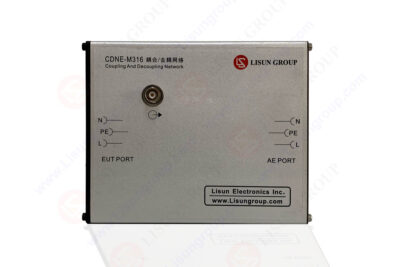
ड्रॉप परीक्षण मानक: GB/T2423.8, आईएसटीए, आईईसी60068-2-32, जीबी/टी4857.5, GJB150, IEC60068-2-27 1. ड्रॉप परीक्षण मशीनों का अनुप्रयोग और उद्देश्य: लॉजिस्टिक्स उद्योग के तेजी से विकास के साथ, कागज के बक्से और पैकेजिंग सामग्री अक्सर परिवहन के दौरान टकराव और गिरने से पीड़ित होती हैं। ड्रॉप परीक्षण मशीनों का उपयोग मुख्य रूप से परिवहन के दौरान पैकेजिंग सामग्री पर पड़ने वाले प्रभाव का अनुकरण करने के लिए किया जाता है...

स्पेक्ट्रोफोटोमीटर एक उपकरण है जिसका उपयोग वस्तुओं की परावर्तित वर्णक्रमीय शक्ति और प्रकाश विशेषताओं को मापने के लिए उनके मानक रंग मूल्यों को निर्धारित करने के लिए किया जाता है। हालाँकि, रंग अंतर गणना विधियों और प्रकाश स्रोत चयन में अंतर के कारण माप परिणाम भिन्न हो सकते हैं। इसलिए, ... का उपयोग करते समय उचित रंग अंतर सूत्रों और प्रकाश स्रोतों का सावधानीपूर्वक चयन करना महत्वपूर्ण है।

मनुष्य द्वारा सुंदरता की खोज समय के साथ नहीं बदलेगी। आजकल, यह खोज जीवन के विभिन्न पहलुओं में परिलक्षित होती है, और सबसे आम है मेकअप की "व्यावहारिक कला"। इसके आधार पर, सौंदर्य प्रसाधन उद्योग में प्रतिस्पर्धा काफी भयंकर है। ग्राहकों की आवश्यकताओं को समझने और उनकी रचनात्मकता को प्रदर्शित करने के लिए, सौंदर्य प्रसाधनों का रंग इसके सहज और महत्वपूर्ण में से एक है...

तीव्र तापमान परिवर्तन परीक्षण कक्ष "विद्युत घटकों के सुरक्षा परीक्षण के लिए उपयुक्त है और विश्वसनीयता परीक्षण, उत्पाद स्क्रीनिंग परीक्षण" प्रदान करता है, और इस उपकरण के माध्यम से "उत्पाद विश्वसनीयता और गुणवत्ता नियंत्रण में सुधार" भी कर सकता है, इसका परीक्षण कक्ष आमतौर पर उपयोग किए जाने वाले परीक्षण के रूप में उपयोग किया जाता है। विमानन, ऑटोमोबाइल, घरेलू उपकरण और विज्ञान जैसे क्षेत्रों में उपकरण...

बाज़ार में रंगीन स्पेक्ट्रोफोटोमीटर के कई अलग-अलग ब्रांड हैं, और यहां तक कि एक ही ब्रांड के भीतर भी कई उत्पाद उपलब्ध हैं। हैंडहेल्ड और डेस्कटॉप प्रकार सबसे लोकप्रिय श्रेणियां हैं, लेकिन इन दोनों प्रकारों के बीच अंतर क्या हैं? पोर्टेबल कलरमीटर - जिसे पोर्टेबल स्पेक्ट्रोफोटोमीटर के रूप में भी जाना जाता है, सीधे डेटा पढ़ सकता है और सॉफ्टवेयर के माध्यम से कंप्यूटर से कनेक्ट हो सकता है...

I. सर्ज जेनरेटर का परिचय सर्ज जेनरेटर विद्युत प्रणालियों में महत्वपूर्ण उपकरण हैं। उनका मुख्य कार्य विभिन्न वृद्धि दमन प्रणालियों की प्रभावशीलता का परीक्षण और मूल्यांकन करने के लिए उच्च-वोल्टेज दालों या तात्कालिक वोल्टेज उतार-चढ़ाव का अनुकरण करना है। ये उच्च-वोल्टेज विद्युत उपकरण मुख्य रूप से क्षणिक वोल्टेज के उतार-चढ़ाव को विद्युत प्रणालियों को नुकसान पहुंचाने से रोकने के लिए काम करते हैं, ...

डंप्ड ऑसिलेशन क्या है: डंप्ड ऑसिलेशन एक प्रकार की गैर-हार्मोनिक गति है जो आमतौर पर स्प्रिंग ऑसिलेटर और पेंडुलम जैसी प्रणालियों में देखी जाती है। यह एक कंपन है जिसमें घर्षण और प्रतिरोध जैसे कारकों की उपस्थिति के कारण समय के साथ आयाम धीरे-धीरे कम हो जाता है, जिसे भिगोना भी कहा जाता है। कंपन प्रणाली लगातार बाहरी प्रतिरोध पर काबू पाती है और ऊर्जा की खपत करती है, जिससे...

युग्मन और वियुग्मन क्या है? युग्मन दो सर्किटों या एक सर्किट में दो भागों के बीच ऊर्जा विनिमय लिंकेज है, जो ऊर्जा को एक सर्किट से दूसरे सर्किट या एक हिस्से से दूसरे हिस्से में प्रसारित करने में सक्षम बनाता है। डिकॉउलिंग एक सर्किट से दूसरे सर्किट में ऊर्जा प्रतिक्रिया की रोकथाम है, अप्रत्याशित प्रतिक्रिया प्रतिक्रियाओं से बचने के लिए, जिसके परिणामस्वरूप अगले स्तर के एम्पलीफायर या अन्य का असामान्य संचालन होता है ...

उच्च और निम्न तापमान टर्मिनल शॉक चैंबर आधुनिक विश्वसनीयता प्रयोगशालाओं का मुख्य उपकरण है, जो परीक्षण के लिए ठंडे और गर्म वातावरण में परिवर्तन का अनुकरण करता है, और उच्च और निम्न तापमान प्रभावों के तहत विभिन्न सामग्रियों के ठंडे और गर्म चक्र और पर्यावरणीय तनाव परीक्षणों के लिए उपयोग किया जाता है। . पर्यावरण परीक्षण के बाद उत्पाद के भौतिक परिवर्तन और भौतिक गुण...